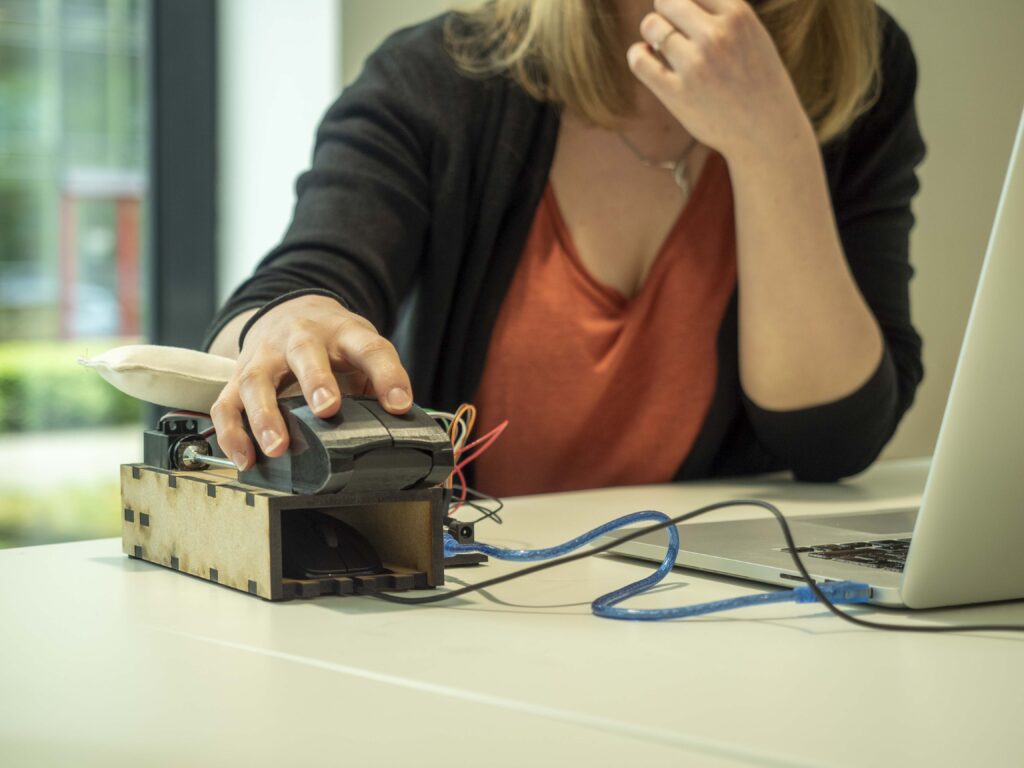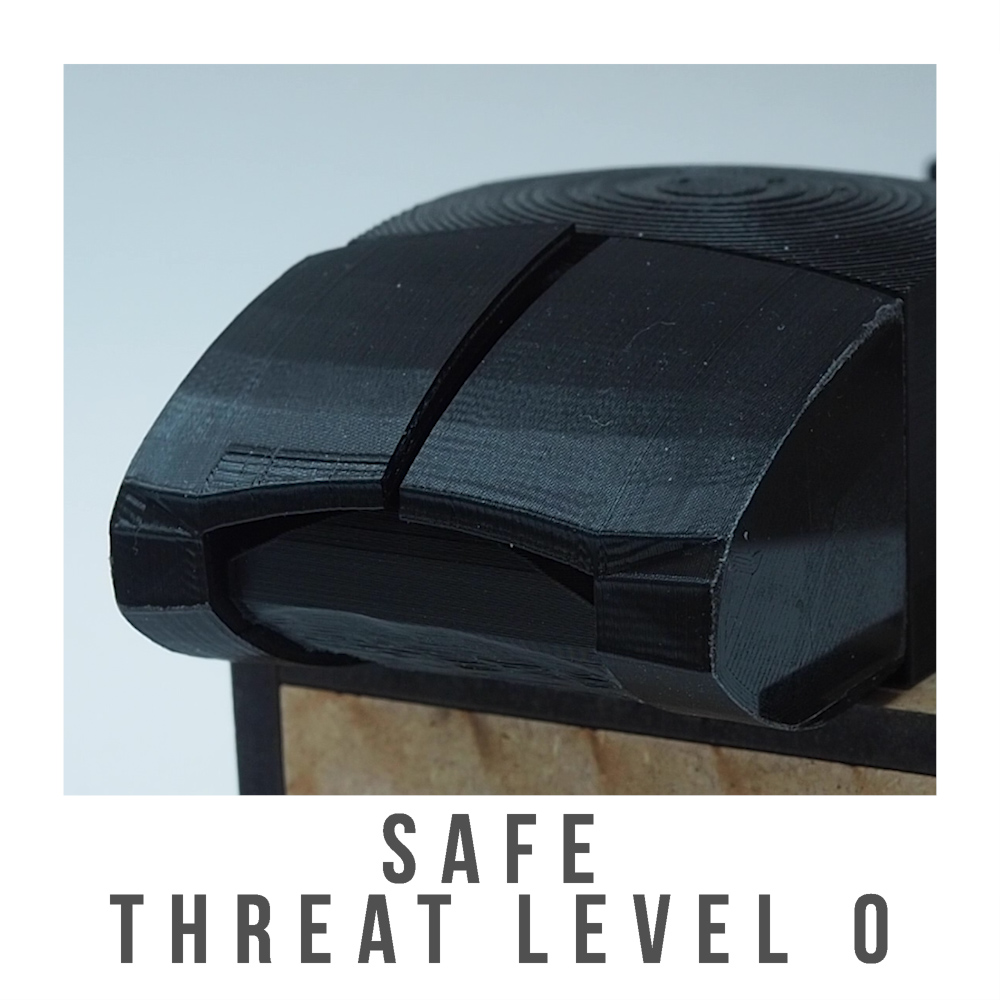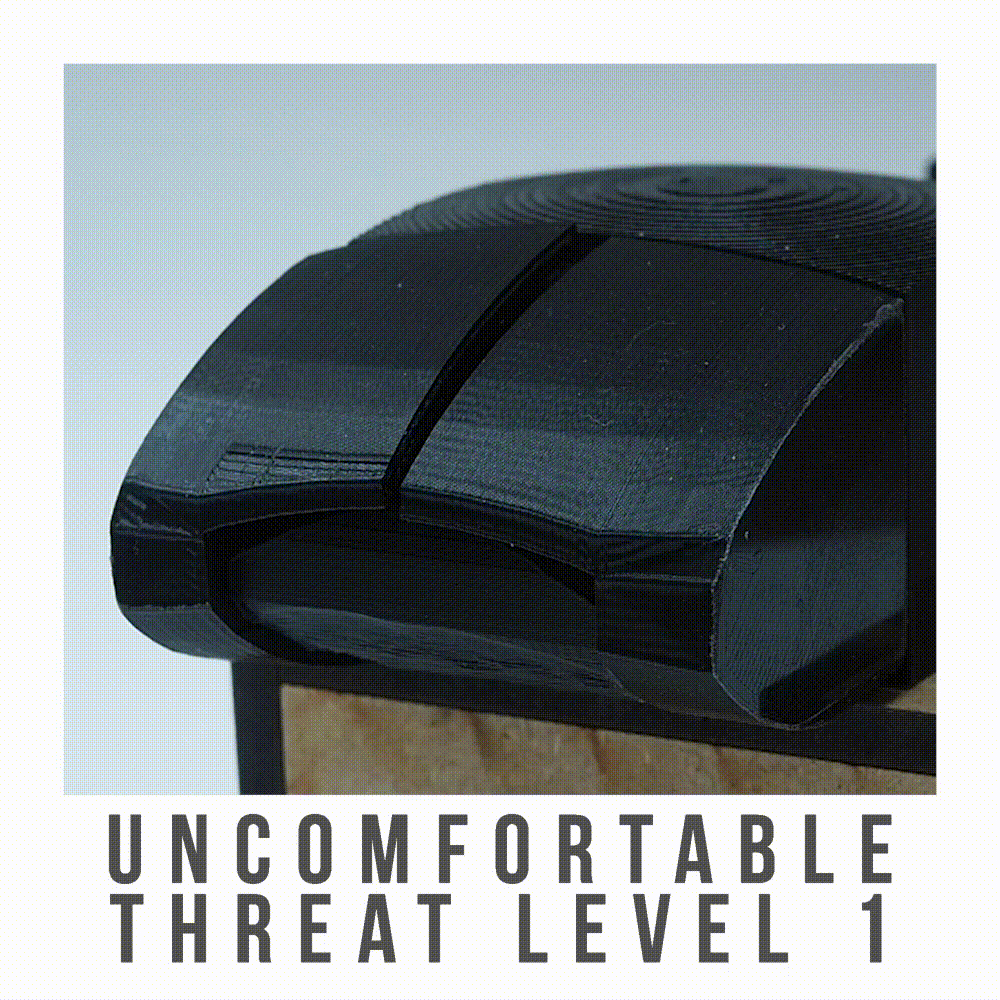Virtuel
Final Master Project 2021
In 2020 every seven days 700.000 unique URLs were detected and blocked by ESET only. Combined with the knowledge that current anti-phishing browsing cues are ineffective, as users from all demographics don’t understand, miss or choose to ignore current visual aid provided by browsers
or online safety tools. This Final Master Project proposes an alternative via haptic feedback, more specifically, haptic feedback through shape-change as a means to communicate the dangers of a website to its users. The result was Virtuel, a shape- changing computer mouse that communicated two threat levels by moving rotating the mouse buttons upwards. Virtuel had been designed through 3 iterations, involving users and experts throughout the process for input and validation. Starting form a paper exploration to shape, followed by a digital exploration to movement and expressions to finally a physical exploration ready for user testing.
The aim of this project was to find a pleasant interaction that would help user to identify the safety of a website better and secondly to see if users are open for shape-change and haptic feedback in their everyday lives.
FunctionsVirtuel creates a impactful, but accepted way of notifying the user if there is a possible threat on a website. It urges users to check critical points again and will prevent users to fill in personal data. It can be overruled by the user, turning the haptic feedback on or off.
The verdict of Virtuel is based on a fixed set of 11 filters that scan the website. Every filter adds or removes points ending on three different outcomes: safe, discomfort and danger. If the site is classified as safe, the mouse will not interact with the user. If the site is classified as discomfort the mouse buttons will wiggle twice and if the website is classified as danger Virtuel will open its mouse-buttons. Taking the users option to click away.
Results%
Correctly identified websites without Virtuel
%
Correctly identified websites with Virtuel
11 Participants were shown 10 websites. The first time without any external help, and a second time with Virtuel. The result of using Virtuel in a user test is on average an improvement from 5,6 to 8,5 correctly identified websites. The downside of using a system like this is that users blindly trust the indication, the confidence of the correct answer rose with 11%. Potential dangers are false negatives or positives. During the user test there was a false negative, meaning that a website was attempting phishing, but did not get picked up by the mouse. Only 3 out of 11 participants noticed this site was fake, but these 3 participants were also able to discover this site was attempting phishing during the baseline measurement.
Participants of the user test agree that the interaction feels very natural, startling the users the first time the Virtuel moves. But participants mention that this is both justified due to communicating danger, and it gets familiar after once of twice. When asked about long time use, participants mention that the feedback would encourage them to check again and pay extra attention to safety details. But, the system has to be trustworthy, proving that it can effectively rule out the malicious websites over regular safe websites.

Message me here!





